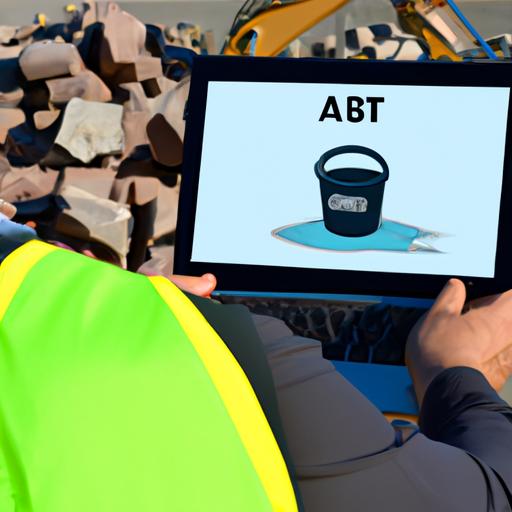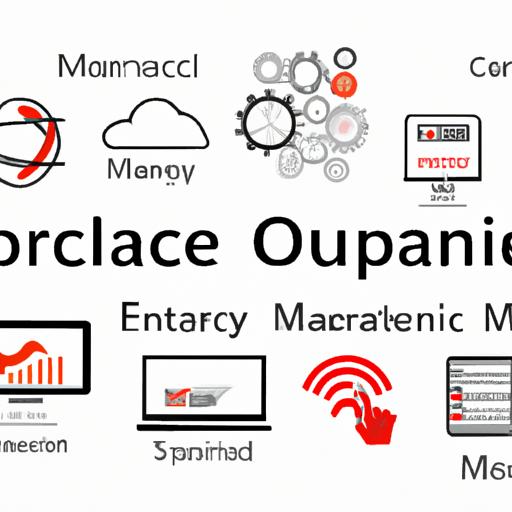What is Computer Software Maintenance?
Introduction
Have you ever wondered what keeps your computer software running smoothly and efficiently? Well, that’s where computer software maintenance comes into play. In this article, we will delve into the world of software maintenance, understanding its significance in ensuring optimal performance and longevity of your software.
Definition of Computer Software Maintenance
Computer software maintenance refers to the process of managing and updating software to ensure its continued functionality, reliability, and security. It involves a range of activities aimed at identifying and resolving software issues, adapting the software to changing requirements, and enhancing its overall performance.
Importance of Software Maintenance
Imagine buying a brand-new car and never taking it for regular maintenance or servicing. Eventually, it would start experiencing performance issues, breakdowns, and potentially even become unusable. Similarly, computer software requires regular maintenance to keep it in top shape. By investing in software maintenance, you can prevent software defects, bugs, and vulnerabilities from impacting your operations. It also allows you to take advantage of new features and advancements in technology, keeping your software up-to-date and relevant.
Software maintenance is crucial for the longevity of your software. Without proper maintenance, software can become outdated, incompatible with new hardware or software, and prone to security breaches. By performing regular maintenance tasks, you can extend the lifespan of your software, reducing the need for costly replacements or major repairs.
In the next sections, we will explore the different types of software maintenance, key objectives, phases of the maintenance process, best practices, and more. So, let’s dive in and unravel the intricacies of computer software maintenance together!
Understanding Computer Software Maintenance
When it comes to computer software maintenance, it’s essential to have a clear understanding of the activities involved and the different types of maintenance. Let’s take a closer look to gain a comprehensive understanding.
Overview of Software Maintenance Activities
Software maintenance encompasses a range of activities aimed at managing and improving software performance. These activities can include bug fixing, troubleshooting, updating, and optimizing software to ensure its smooth operation. Maintenance tasks may involve identifying and resolving software defects, enhancing user experience, and addressing compatibility issues with new hardware or software updates.
Types of Software Maintenance
-
Corrective Maintenance: This type of maintenance focuses on identifying and fixing software defects or bugs that may arise during the software’s operational phase. Corrective maintenance aims to restore the software to its intended functionality and ensure that it operates without errors or malfunctions.
-
Adaptive Maintenance: As technology evolves, software often needs to adapt to new environments, platforms, or user requirements. Adaptive maintenance involves modifying the software to accommodate such changes. It ensures that the software remains compatible and functional in different operating systems or hardware configurations.
-
Perfective Maintenance: Perfective maintenance involves making improvements to the software’s functionality, performance, or usability. This type of maintenance aims to enhance the software by adding new features, optimizing code, improving user interfaces, or enhancing overall performance. Perfective maintenance helps to keep the software relevant, efficient, and user-friendly.
-
Preventive Maintenance: Just like regular check-ups and preventive measures keep us healthy, preventive maintenance for software helps prevent potential issues from arising. It involves proactively monitoring and maintaining the software to identify and resolve any potential vulnerabilities or risks before they cause significant problems. Preventive maintenance helps ensure the software remains secure, stable, and reliable over time.
Significance of Each Type in Ensuring Software Functionality and Reliability
Each type of software maintenance plays a crucial role in ensuring the functionality and reliability of software throughout its life cycle. Corrective maintenance helps rectify issues, adaptive maintenance ensures compatibility, perfective maintenance enhances the software, and preventive maintenance proactively safeguards against future problems. By understanding and implementing these maintenance types, you can ensure that your software remains robust, efficient, and capable of meeting your evolving needs.
Key Objectives of Software Maintenance
Software maintenance serves several critical objectives that contribute to the smooth functioning and longevity of your software. Let’s delve into these objectives and understand their importance:
Preservation of Software Functionality and Performance
The primary objective of software maintenance is to preserve the functionality and performance of your software. As your software is used over time, it may encounter issues or experience performance degradation. Through maintenance activities, such as bug fixes, performance optimizations, and code refactoring, you can ensure that your software continues to operate as intended, delivering the expected results to users.
Elimination of Software Defects and Bugs
Software defects and bugs can hamper the user experience, lead to data loss, or even cause system crashes. Software maintenance aims to identify and eliminate these issues. Through rigorous testing, debugging, and error resolution, software maintenance helps in identifying and fixing defects, ensuring that your software operates flawlessly.
Enhancement of Software Features and Capabilities
As technology evolves and user requirements change, it becomes essential to enhance your software’s features and capabilities. Software maintenance facilitates the addition of new functionalities, improvements to existing features, and the incorporation of user feedback. By regularly updating and enhancing your software, you can stay competitive in the market and meet the evolving needs of your users.
Ensuring Compatibility with Evolving Hardware and Software Environments
In today’s rapidly changing technological landscape, hardware and software environments are continually evolving. New operating systems, hardware architectures, and software dependencies emerge, and your software needs to remain compatible with these changes. Software maintenance involves updating and adapting your software to ensure seamless integration with the latest hardware and software technologies, enabling your software to run smoothly in diverse environments.
By focusing on these key objectives of software maintenance, you can ensure that your software remains functional, bug-free, feature-rich, and compatible with the ever-changing technological landscape. In the next sections, we will explore the phases of the software maintenance process and delve into best practices for effective software maintenance. So, let’s continue our journey into the world of software maintenance!
Phases of Software Maintenance Process
Identification and Documentation of Software Issues
The first phase of the software maintenance process involves identifying and documenting any issues or problems within the software. This includes gathering user feedback, conducting thorough testing, and analyzing error reports. By carefully documenting these issues, developers can gain a better understanding of the software’s weaknesses and areas that require improvement.
Analysis and Prioritization of Maintenance Tasks
Once the software issues have been identified, the next step is to analyze and prioritize them based on their severity and impact on the software’s functionality. Some issues may be critical and require immediate attention, while others may be less urgent. This phase involves evaluating the potential risks and benefits associated with each maintenance task to ensure that resources are allocated effectively.
Development and Implementation of Maintenance Solutions
After prioritizing the maintenance tasks, the development and implementation phase begins. This involves designing and coding the necessary changes or updates to address the identified software issues. Developers work closely to implement the maintenance solutions in a way that minimizes disruption to the software’s existing functionality and adheres to coding best practices.
Testing and Verification of Software Changes
Before deploying the updated software, thorough testing and verification are essential to ensure that the maintenance solutions have been implemented successfully. This phase involves conducting various tests, such as unit testing, integration testing, and system testing, to identify any potential issues or regressions that might have been introduced during the maintenance process. Verification ensures that the software performs as intended and meets the desired quality standards.
Deployment and Monitoring of Updated Software
Once the testing and verification phase is complete, the updated software is ready for deployment. This involves replacing the previous version with the updated version and ensuring a smooth transition for end-users. Additionally, ongoing monitoring is crucial to track the performance of the updated software, detect any new issues that may arise, and address them promptly to maintain optimal functionality.
In the next section, we will explore the best practices for effective software maintenance, which can help organizations streamline their processes and maximize the benefits of ongoing maintenance efforts.
Best Practices for Effective Software Maintenance
Regular Software Updates and Patches
One of the fundamental best practices for effective software maintenance is regularly updating and patching your software. Software updates often contain bug fixes, security patches, and performance enhancements. By staying up-to-date with the latest versions, you can ensure that your software remains secure, stable, and compatible with evolving technologies.
Thorough Testing and Quality Assurance Procedures
Before implementing any changes or updates to your software, it is essential to conduct thorough testing and quality assurance procedures. This includes comprehensive testing of new features, bug fixes, and any modifications made during the maintenance process. By rigorously testing your software, you can identify and rectify any potential issues before they impact your users or operations.
Documentation and Version Control Practices
Maintaining proper documentation and version control is crucial for effective software maintenance. Documenting changes, updates, and bug fixes allows for better understanding and collaboration between developers, testers, and end-users. Version control practices, such as using a version control system like Git, enable easy tracking of changes, rollbacks, and collaboration among multiple developers working on the same software.
Collaboration between Developers, Testers, and End-Users
Successful software maintenance requires collaboration between various stakeholders, including developers, testers, and end-users. Developers play a crucial role in implementing changes and updates, while testers ensure the software’s quality and functionality. Engaging end-users in the maintenance process by seeking their feedback and addressing their concerns can lead to valuable insights and improve the user experience.
Monitoring and Addressing User Feedback
User feedback is a valuable resource for maintaining and improving software. Actively monitoring user feedback, whether through surveys, support tickets, or online forums, allows you to identify areas for improvement and address any issues promptly. By incorporating user feedback into your maintenance efforts, you can enhance the overall usability and satisfaction of your software.
By following these best practices, you can ensure that your software maintenance efforts are effective, efficient, and yield optimal results. Remember, effective software maintenance is not just about fixing bugs or implementing updates, but also about fostering a collaborative and user-centric approach to continuously improving your software.
Conclusion
In conclusion, computer software maintenance is a vital process that ensures the optimal performance and longevity of your software. By understanding the importance of software maintenance, you can take proactive steps to protect your investment and avoid potential issues down the line.
Throughout this article, we explored the definition of computer software maintenance and its significance in maintaining software functionality. We discussed the various types of software maintenance, including corrective, adaptive, perfective, and preventive, each playing a crucial role in keeping your software running smoothly.
We also delved into the key objectives of software maintenance, such as preserving software functionality, eliminating defects, and enhancing features. Understanding these objectives allows you to prioritize and allocate resources effectively for software maintenance activities.
Additionally, we discussed the phases of the software maintenance process, emphasizing the importance of identification, analysis, development, testing, and deployment. By following these phases, you can ensure that software maintenance is carried out in a systematic and efficient manner.
To achieve effective software maintenance, we highlighted best practices such as regular updates, thorough testing, documentation, collaboration, and user feedback. Implementing these practices will help you maintain software integrity and meet the evolving needs of your users.
In a world where technology is constantly evolving, software maintenance is not a one-time task but an ongoing process. By prioritizing software maintenance, you can future-proof your software, stay ahead of potential issues, and provide a seamless user experience.
So, remember, the key to unlocking the full potential of your software lies in the diligent and regular maintenance it receives. Invest in software maintenance today and reap the benefits of optimized performance, enhanced functionality, and prolonged lifespan.
Thank you for joining me on this journey of understanding computer software maintenance. Keep maintaining, keep innovating, and keep thriving in the digital landscape!






